I really enjoy working with Spelt because it’s very versatile and healthy. So when I saw this lovely Sourdough Spelt Bread on Chews Wise, I knew I had to try it.
His version is beautiful, made with organic white bread flour and organic Spelt flour. I wanted a 100% Spelt loaf so I used a combination of whole grain and white Spelt bread flour. I also used a 100% hydration levain instead of a stiff levain.
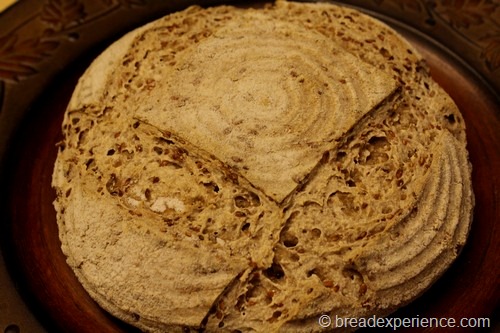
Spelt is a fascinating grain. It’s not a modern grain; therefore, it does not perform in the same manner as modern wheat. Spelt absorbs water really well, but at the same time, it needs to be handled gently and not over mixed in order to develop the gluten. I’m still getting the hang of working with Spelt, but I’m having fun in the process.
My version turned out to be very interesting-looking due to the light color of the flour and the texture created by the flax seeds. I wasn’t sure how it would taste, but I really enjoyed the complex flavors in this sourdough bread. It reminds me of rye sourdough, however, it doesn’t contain any rye flour.
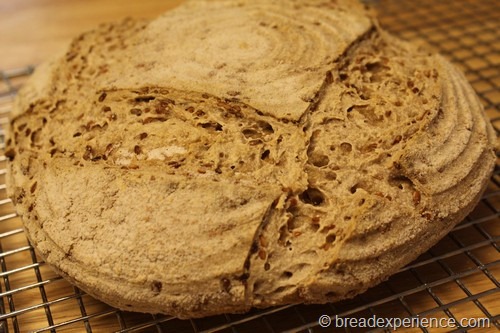
Sourdough Spelt Loaf with Flax Seeds
Adapted from: This Organic Loaf: Sourdough Spelt with Flax Seeds by Samuel Fromatz at Chews Wise
Ingredients:
Sourdough:
- 70 grams Spelt starter (100% hydration)
- 70 grams water
- 60 grams White Spelt Bread Flour (I used Vita Spelt)
- 60 grams Whole Grain Spelt Flour (I used home-milled flour)
Flax Seed Soaker:
- 85 grams (1/2 cup) flax seeds
- 80 grams water (to cover the seeds)
Final Dough:
- 250 grams sourdough (all of the above)
- Flax seed soaker
- 280 grams White Spelt Flour
- 280 grams Whole Grain Spelt Flour
- 400 grams (~ 1 2/3 cup) water
- 12 grams Kosher salt
Directions:
1) Feed the Starter
The day before making this bread, discard about 2/3 of this Whole Grain Spelt Levain, then feed it with 125g White Spelt flour and 125g water and let it sit for 2 to 4 hours before beginning this recipe. Use 70g in this recipe.
2) Make the Sourdough
The night before you plan to make this bread, mix together the sourdough and let it sit overnight (8 – 12 hours), at room temperature (about 75 degrees F.)
The sourdough should have risen fully and just starting to deflate by the morning.
3) Flax seed soaker
Place the flax seeds in a separate bowl and just barely cover them with water.
Cover the bowl and let the flax seeds sit overnight at room temperature. I added more water than the original recipe indicated. The seeds soaked it up completely.
4) Mixing the Dough
The next day, mix together the sourdough and water with a wooden spoon, Danish dough whisk or a spatula until combined. You don’t need a stand mixer for this recipe although you can use one if you prefer. Just be sure not to over mix.
Add the flours and mix until the lumps are gone and the flour is fully hydrated. Cover the bowl and let the mixture rest for 20 minutes.
Add the salt and mix until it is thoroughly incorporated and the dough starts to take on a smooth texture. This will take about 5 minutes by hand. You may need to wet your hands and reach in the bowl to make sure the salt is evenly distributed.
Add the flax seed soaker and continue mixing until the seeds are evenly distributed.
5) Bulk Fermentation
Place the dough in a clean, oiled bowl and cover it with plastic wrap. Let it rise for 2 1/2 – 3 hours at room temperature (about 75 degrees F.) Fold the dough twice at 50 minute intervals. I did the fold-and-turn method in the bowl, but you can remove the dough to a counter to fold it, just be sure not to tear it.
6) Shaping and Final Proof
Turn the dough out onto a floured surface and divide it into two pieces using a bench scraper. Form the pieces into rough rounds and let them rest on the counter for 15 to 20 minutes.
Shape them into tighter rounds and place them seam-side up in floured banneton baskets. You can make your own proofing basket by placing a floured towel in a bowl and then putting the loaves inside. Cover the baskets with a towel or plastic wrap and let them proof at 75 degrees F. until they have doubled in size. This could take anywhere from 90 minutes to 2 1/2 hours.
At this point, you can proof the loaves at room temperature, then bake them. Or to enhance the sourdough flavor, you can retard them overnight in the refrigerator. If you retard them in the refrigerator, cover them tightly with plastic wrap so the outside of the dough doesn’t get hard.
To proof the loaves, I placed one basket in my proofing box and set it to 75 degrees F. I placed the other loaf in the oven with the light off.
My loaves were rising really slowly so I turned the proofer up to 80 degrees F. and turned the light on in my oven. They finally doubled in size.
7) Prepare the Oven for Hearth Baking
Preheat the oven for an hour at 475 degrees F. with a baking stone on the middle rack and a steam pan on the lowest rack.
8) Scoring the Loaves
When the loaves have risen sufficiently, turn them onto a baking sheet lined with parchment paper that has been sprinkled with cornmeal.
The loaf that I had proofed in the proofing box, came out of the basket very easily, and I baked it with no problem. However, the loaf that had been proofed in the oven with the light on stuck to the basket, and I was unable to remove it without completely destroying it. So, I grabbed the wad of dough and reshaped it. Then I let it rest on the counter for 30 minutes before placing it in the refrigerator overnight. The next day, I let the 2nd loaf warm up to room temperature and then scored and baked it following the process below.
Score round loaves in a square pattern using a serrated knife or lame. If you make Batards instead of round loaves, you can score them down the middle.
9) Baking the Loaves
Once the oven is preheated, slide the loaves (on the parchment paper) directly onto the baking stone and pour 1 cup of water in the steam pan. After 30 seconds, open the door, spray the walls with water, and close the door. Repeat twice more at 30-second intervals. Immediately turn the oven down to 450 degrees F. and close the oven door.
Bake the bread for 25 to 35 minutes. Check the loaves during the bake and rotate them 180 degrees for even baking if necessary. Continue baking until the loaves are brown and sound hollow when tapped on the bottom. This bread is light colored so I didn’t want to burn it. I turned the oven off after 30 minutes and let the loaves sit for 5 minutes to ensure they were baked through.
10) Cooling the Loaves
Remove the loaves to a wire rack and cool for at least an hour before slicing and serving.
11) Slice and Enjoy!
I waited 24 hours before slicing this bread. It was worth the wait. The flavor is wonderful! My taste tester really liked this bread, especially dipped in olive oil and sprinkled with a hazelnut spice blend.
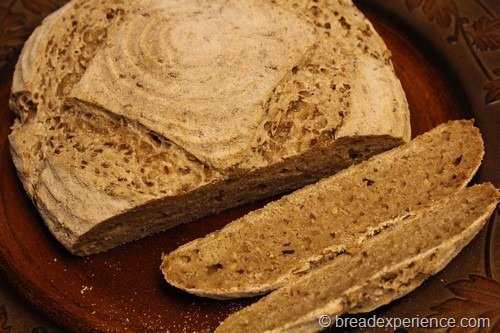
This bread has been YeastSpotted. Please visit Wild Yeast to view the weekly roundups of lovely breads from bread bakers around the globe.
Happy Baking!
Cathy
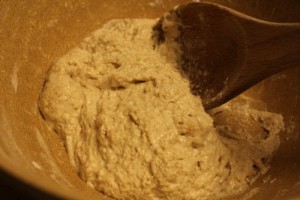
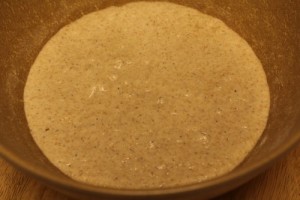
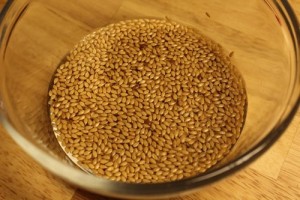
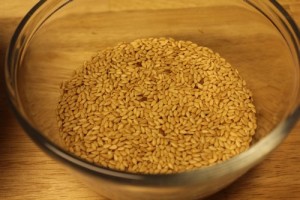
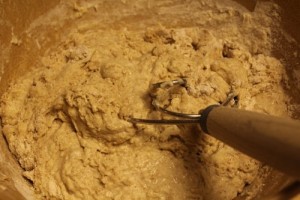
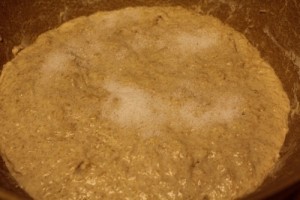
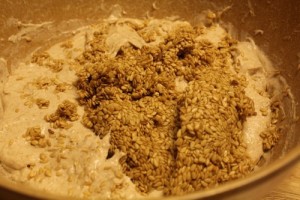
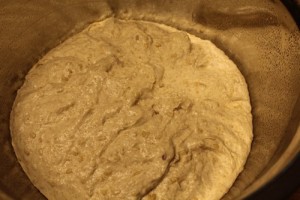
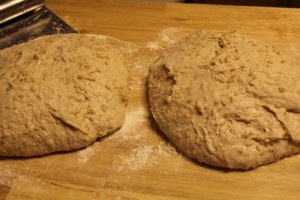
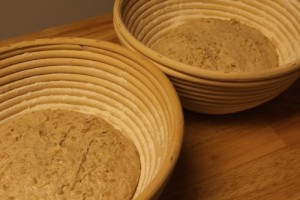
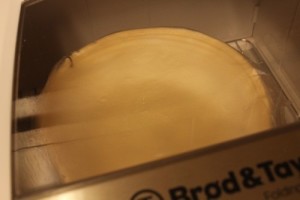
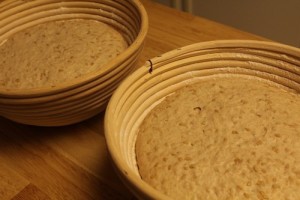
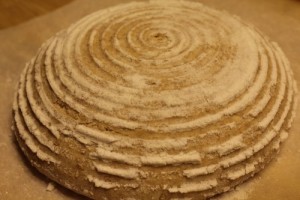
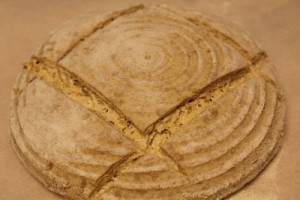
Leave a Reply